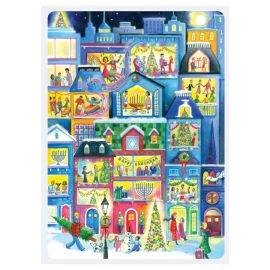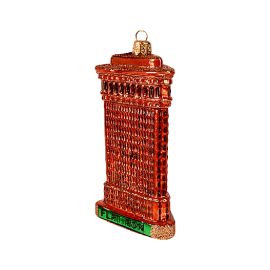Ready to frame poster featuring the 1909 painting Blue Mountain by Vasily Kandinsky.
- Ready to frame
- Paper measures 24 x 30 in.
- Image measures 22 x 24 in.
About the Artist:
Vasily Kandinskys use of the horse-and-rider motif symbolized his crusade against conventional aesthetic values and his dream of a better, more spiritual future through the transformative powers of art. The rider is featured in many woodcuts, temperas, and oils, from its first appearance in the artists folk-inspired paintings, executed in his native Russia at the turn of the century, to his abstracted landscapes made in Munich during the early 1910s. The horseman was also incorporated into the cover designs for Kandinskys theoretical manifesto of 1911, On the Spiritual in Art, and the contemporaneous Blue Rider Almanac, which he coedited with Franz Marc.
In 1909, the year he completed Blue Mountain, Kandinsky painted no less than seven other canvases with images of riders. In that year his style became increasingly abstract and expressionistic and his thematic concerns shifted from the portrayal of natural events to apocalyptic narratives. By 1910 many of the artists abstract canvases shared a common literary source, the Revelation of Saint John the Divine; the rider came to signify the Horsemen of the Apocalypse, who will bring epic destruction after which the world will be redeemed. In both Sketch for Composition II and Improvisation 28 (second version) Kandinsky depicted-through highly schematized means-cataclysmic events on one side of the canvas and the paradise of spiritual salvation on the other. In the latter painting, for instance, images of a boat and waves (signaling the global deluge), a serpent, and, perhaps, cannons emerge on the left, while an embracing couple, shining sun, and celebratory candles appear on the right.
| Skip FB/IG Feed? | No |
|---|---|
| Description | Ready to frame poster featuring the 1909 painting Blue Mountain by Vasily Kandinsky.
About the Artist: Vasily Kandinskys use of the horse-and-rider motif symbolized his crusade against conventional aesthetic values and his dream of a better, more spiritual future through the transformative powers of art. The rider is featured in many woodcuts, temperas, and oils, from its first appearance in the artists folk-inspired paintings, executed in his native Russia at the turn of the century, to his abstracted landscapes made in Munich during the early 1910s. The horseman was also incorporated into the cover designs for Kandinskys theoretical manifesto of 1911, On the Spiritual in Art, and the contemporaneous Blue Rider Almanac, which he coedited with Franz Marc. In 1909, the year he completed Blue Mountain, Kandinsky painted no less than seven other canvases with images of riders. In that year his style became increasingly abstract and expressionistic and his thematic concerns shifted from the portrayal of natural events to apocalyptic narratives. By 1910 many of the artists abstract canvases shared a common literary source, the Revelation of Saint John the Divine; the rider came to signify the Horsemen of the Apocalypse, who will bring epic destruction after which the world will be redeemed. In both Sketch for Composition II and Improvisation 28 (second version) Kandinsky depicted-through highly schematized means-cataclysmic events on one side of the canvas and the paradise of spiritual salvation on the other. In the latter painting, for instance, images of a boat and waves (signaling the global deluge), a serpent, and, perhaps, cannons emerge on the left, while an embracing couple, shining sun, and celebratory candles appear on the right. |
| Artist | Vasily Kandinsky |







